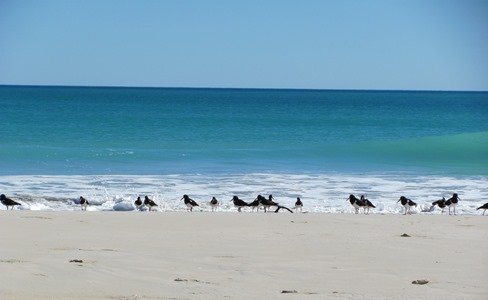
Once again Pied Oystercatcher breeding season is fast approaching in Broome and we can expect the first batch of eggs to be laid within the next few weeks. We have monitored a 23 kilometre section of beach in Broome for several years now and have discovered that they are not as site faithful or as monogamous as you read in text books. We have also discovered that they are very rarely successful with the first eggs laid due to predation of either the eggs or the chicks. As a result of this it is invariably late in the year when we encounter our first fully fledged juvenile Pied Oystercatcher. It was October last year when the Pied Oystercatcher chick first took flight. Due to the longevity of this species it appears that they are able to maintain their population. Where the beach has a reef alongside it on the northern section of the beach the pairs stay together throughout the non-breeding season. Further to the south the birds move into Roebuck Bay or to the reef at the far end of Cable Beach, where they raise their chick. Nest sites are chosen primarily with good visibility and they will nest further from their food source if necessary to avoid predation or disruption from vehicles on the beach.
We have recently been monitoring the northern area of our survey site and a flock of Pied Oystercatchers were gathered at the mouth of the creek. It is not uncommon to see a flock there when they are establishing partners and there is often a lot of piping. They face down and run with their shoulders upwards at each other calling frantically and then often fly up in pairs calling. It is a spectacular and noisy sight. When we approached the flock we discovered we had twenty one birds in the flock and there was an intruder. Sooty Oystercatchers do not breed along the Broome coastline, but are often encountered in small flocks on rocky outcrops. There was only one Sooty Oystercatcher amongst the other twenty Pied Oystercatchers and it had obviously decided there was “safety in numbers” of a similar species! The Pied Oystercatchers feel threatened by birds of prey during breeding season and will chase them off. We have also observed them take flight in large flocks to the south of Broome in the presence of Lesser Frigatebirds. This appears odd behaviour due to the fact that they have not been observed attempting to take food from Pied Oystercatchers and the threat of three Lesser Frigatebirds on a flock of three hundred Pied Oystercatchers is not clear. They do not react to Lesser Frigatebirds when they are in pairs and breeding.
Flock of Pied Oystercatchers
Sooty Oystercatcher amongst the Pied Oystercatchers
Sooty Oystercatcher having a shake!
Pied Oystercatchers with a lone Sooty Oystercatcher
You can see that the eye ring on the Sooty Oystercatcher is extremely bright and the bill on this species is somewhat shorter. They feed predominately on rocky outcrops whilst the Pied Oystercatchers will feed from both on the reef and by probing into deep sand for razor clams.
One of the highlights for us on this section of the beach is the reef and the fast dropping tides. We await the tide dropping as eagerly as the Pied Oystercatchers, but whilst they go looking for food we are exploring just for the experience of the amazing creatures that are present. Some of the first creatures to be exposed are the octopus and they are well camouflaged until you approach and as a shadow goes over them they will change colour and swim off.
Octopus changing colour and swimming off
There are also much smaller octopus present and these are the deadly Blue-ringed Octopus. They are more easily observed because they do not have the camouflage of the other octopus.
Blue-ringed Octopus
We have never observed an Oystercatcher take any interest in octopus. They appear to only be of interest to us…along with so many other creatures on this reef! The tidal range of 10 metres in Broome enables us to observe the reef on foot and avoid swimming with anything too dangerous!

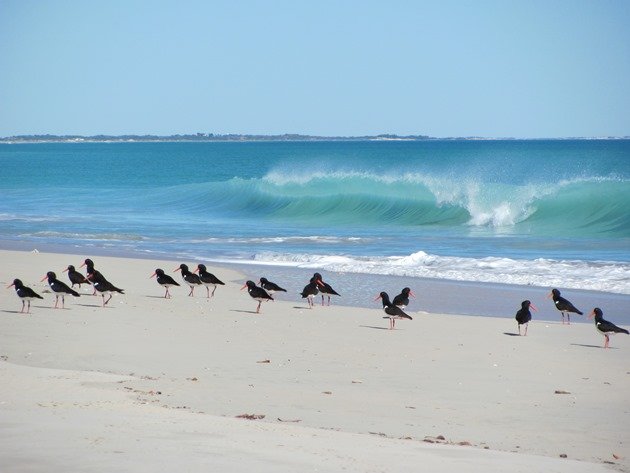
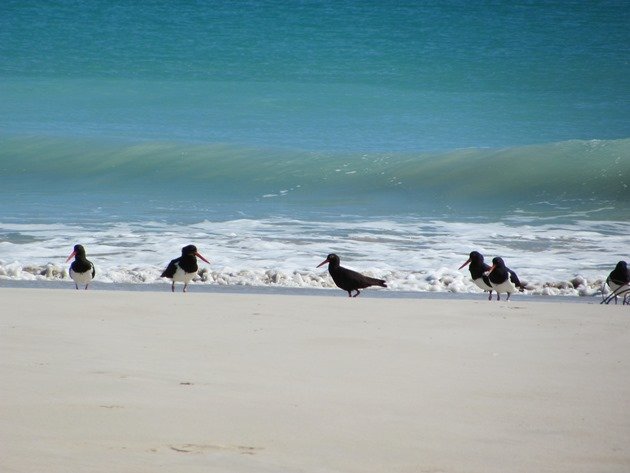
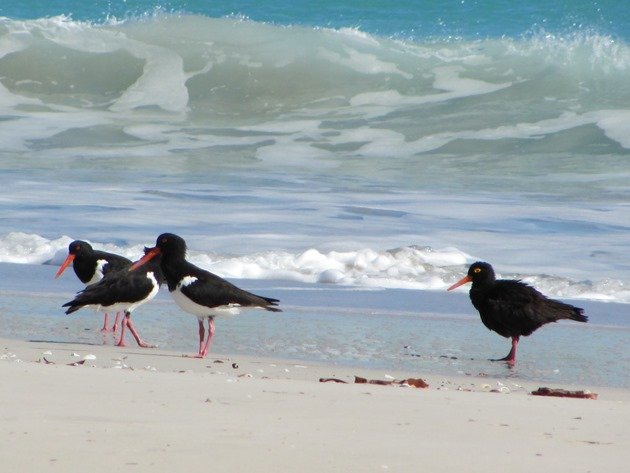


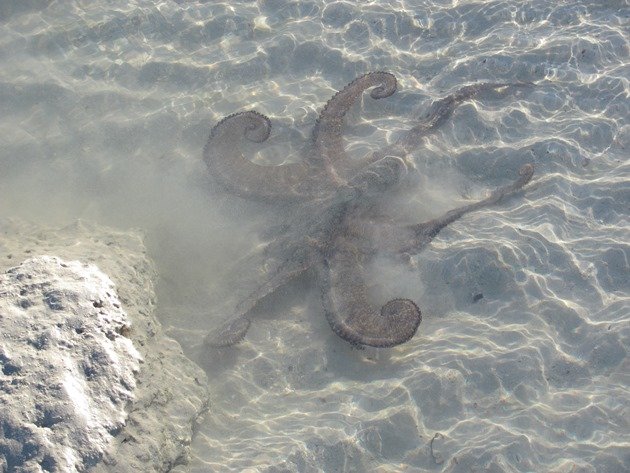
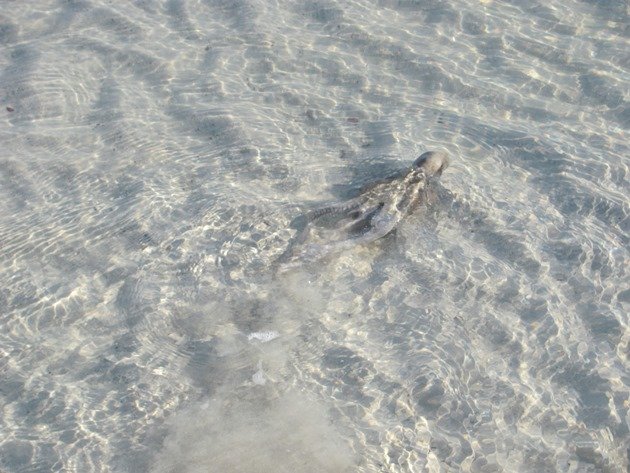
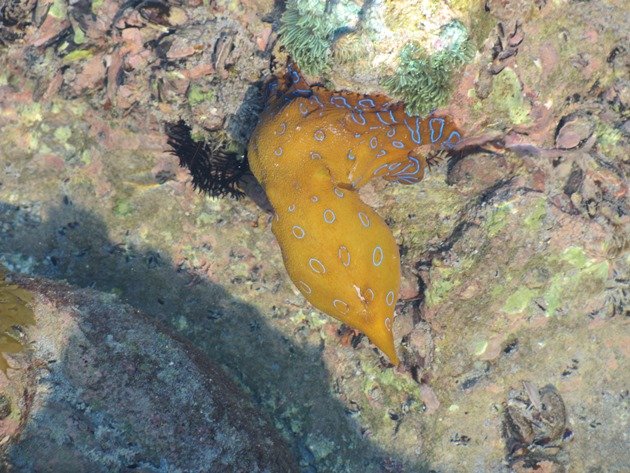
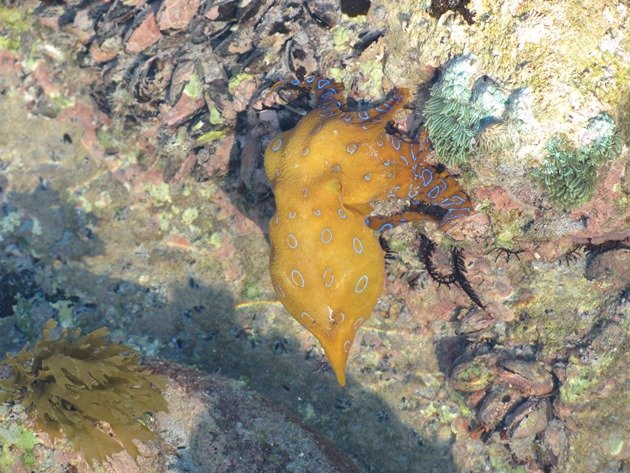










Oystercatchers don’t take an interest in octopus because they’ve recently been chatting with skuas:
http://www.zestforbirds.co.za/skuasquid.html
You are a great source of information, Jochen!
Great photos of the Oystercatchers! And I love seeing photos of both species of octopus. What an incredible beach!
That Blue-ringed Octopus is amazing.